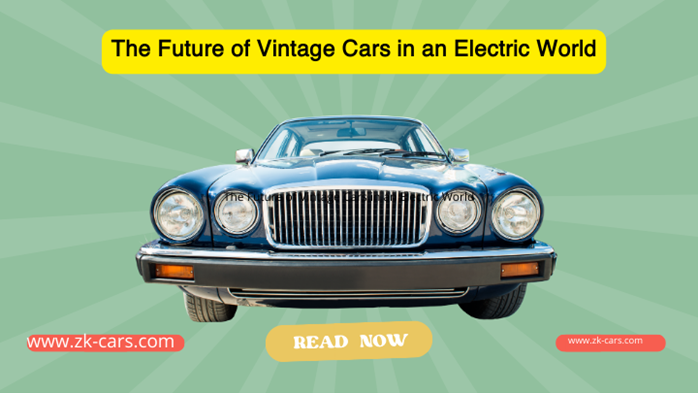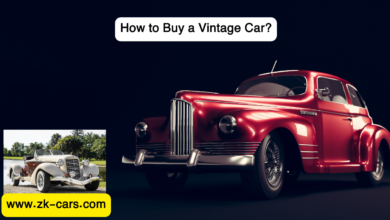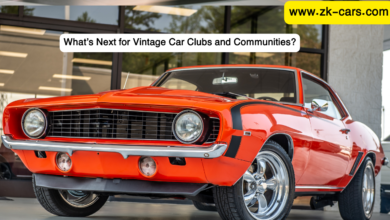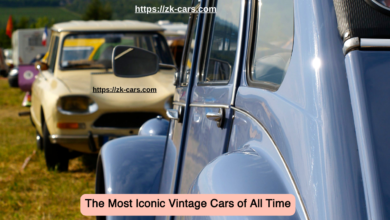The Future of Vintage Cars in an Electric World

As the automotive industry embraces electrification, the future of vintage cars is becoming a topic of great interest and discussion. Classic cars, once revered for their mechanical prowess and unique designs, now face the challenge of adapting to a world increasingly dominated by electric vehicles (EVs).
This article delves into the implications of electric technology on vintage cars, the potential for hybrid solutions, and how enthusiasts can preserve the charm of classic vehicles while embracing innovation.
1. The Electric Revolution
A. A Shift in Automotive Paradigms
The automotive landscape is changing rapidly due to environmental concerns, advancements in technology, and consumer preferences. The rise of electric vehicles is characterized by several key trends:
- Environmental Impact: The shift towards electric vehicles is primarily driven by the need to reduce carbon emissions and combat climate change.
- Government Regulations: Many countries are setting ambitious targets to phase out internal combustion engines, leading to a surge in EV adoption.
- Consumer Demand: Increasing awareness of sustainability is prompting consumers to consider electric options for their next vehicle purchase.
B. The Rise of Electric Classics
As the electric revolution gains momentum, some vintage car manufacturers and enthusiasts are exploring the possibility of retrofitting classic cars with electric drivetrains:
- Sustainable Restoration: Converting vintage cars to electric not only preserves their aesthetic charm but also contributes to a more sustainable future.
- Improved Performance: Electric drivetrains can enhance performance, offering quicker acceleration and smoother operation compared to traditional engines.
2. The Charm of Vintage Cars
A. Aesthetic Appeal and Heritage
For many, vintage cars represent more than just transportation; they are symbols of an era rich in history and craftsmanship:
- Design Elements: The distinctive designs of classic cars evoke nostalgia, attracting enthusiasts who appreciate the artistry of past automotive engineering.
- Cultural Significance: Vintage cars often hold cultural significance, connecting owners to personal stories, family legacies, and a shared automotive history.
B. The Driving Experience
Driving a vintage car is often a unique experience characterized by:
- Mechanical Connection: Many enthusiasts enjoy the tactile feel of driving a classic vehicle with a manual transmission and mechanical systems.
- Community Engagement: Owning a vintage car can foster a sense of community among enthusiasts, leading to gatherings, clubs, and car shows.
3. Challenges of Electrification for Vintage Cars
A. Preservation vs. Modernization
As vintage car enthusiasts contemplate electrification, they face a dilemma:
- Maintaining Authenticity: Many purists argue that converting a classic car to electric undermines its authenticity and historical value.
- Modern Performance Expectations: Others contend that adapting to electric technology may be necessary to keep these cars relevant and operational.
B. Cost Considerations
Retrofitting vintage cars with electric drivetrains can be expensive, raising questions about financial feasibility:
- Conversion Costs: The price of a complete electric conversion can range from $20,000 to $100,000, depending on the complexity and components used.
- Resale Value: Owners must consider whether a converted vehicle will retain its value or appreciate as a classic in the long term.
4. The Hybrid Solution
A. A Middle Ground
For those who want to enjoy the best of both worlds, hybrid solutions are emerging as a viable option:
- Combining Technologies: Retrofitting vintage cars with hybrid systems can allow owners to retain the original engine while adding an electric component for improved efficiency and reduced emissions.
- Flexibility: Hybrids offer the flexibility of using electric power for short trips while preserving the traditional driving experience for longer journeys.
B. Examples of Successful Conversions
Several companies and enthusiasts are leading the way in hybrid conversions:
- Zero Labs Automotive: Known for retrofitting classic Ford Broncos with electric drivetrains, combining vintage aesthetics with modern performance.
- E-Classic Cars: Specializes in converting classic Porsches and other models into electric versions while maintaining their original style.
5. The Role of Legislation and Incentives
A. Supporting the Transition
As the electric vehicle market grows, legislation is also adapting to encourage the preservation and conversion of vintage cars:
- Tax Incentives: Some governments offer tax credits or rebates for electric conversions, making them more financially attractive.
- Exemptions for Vintage Vehicles: Certain jurisdictions allow vintage cars to retain their original engine configurations, enabling owners to preserve authenticity while benefiting from modern technology.
B. Industry Standards
The establishment of industry standards for electric conversions is crucial for ensuring safety and performance:
- Safety Regulations: Manufacturers and converters must adhere to safety standards to ensure that retrofitted vehicles meet modern safety requirements.
- Quality Assurance: The emergence of certification programs for electric conversions can help consumers make informed decisions when choosing conversion services.
6. The Future of Vintage Car Enthusiasm
A. Embracing Change
As vintage cars adapt to an electric world, enthusiasts are finding new ways to appreciate and enjoy these classic vehicles:
- Events and Shows: Car shows that feature electric and hybrid vintage cars are becoming more common, providing platforms for showcasing innovative restorations.
- Community Engagement: Enthusiasts are connecting through social media, sharing their experiences with electric conversions and celebrating the blending of old and new.
B. Education and Advocacy
Education will play a vital role in the future of vintage cars:
- Workshops and Seminars: Organizations can host events to educate enthusiasts about the benefits of electrification and how to approach conversions.
- Advocacy for Preservation: Advocacy groups can promote the preservation of vintage vehicles while supporting the transition to electric technologies.
7. Conclusion
The future of vintage cars in an electric world presents both challenges and opportunities. While some purists may resist the idea of converting classic vehicles to electric drivetrains, many enthusiasts are embracing the potential for sustainable restoration and enhanced performance. As technology continues to evolve and legislation adapts, the landscape of vintage car ownership will undoubtedly change, but the allure of these timeless machines will remain.
As we navigate this transition, the key will be finding a balance between preserving the charm and history of vintage cars while embracing the innovations that electric technology brings. By fostering a community that values both tradition and progress, we can ensure that the legacy of vintage cars endures in an electric future.
Common Questions
1. Can I convert my vintage car to electric?
Yes, many companies specialize in retrofitting vintage cars with electric drivetrains, allowing owners to enjoy the benefits of electric technology while preserving their car’s aesthetics.
2. What are the benefits of converting a vintage car to electric?
Electric conversions can enhance performance, improve fuel efficiency, and reduce emissions while offering a sustainable option for preserving classic vehicles.
3. Is it expensive to convert a vintage car to electric?
The cost of converting a vintage car can vary widely, typically ranging from $20,000 to $100,000, depending on the model and components used.
4. Are there incentives for electric conversions?
Some governments offer tax credits or rebates for electric conversions, making them more financially viable for enthusiasts.
5. How can I find a reputable conversion service?
Research online, read reviews, and ask for recommendations from fellow enthusiasts to find a reputable service that specializes in vintage car conversions. The future of vintage cars in an electric world is bright, promising a harmonious blend of nostalgia and innovation that can cater to the needs and values of modern car enthusiasts




